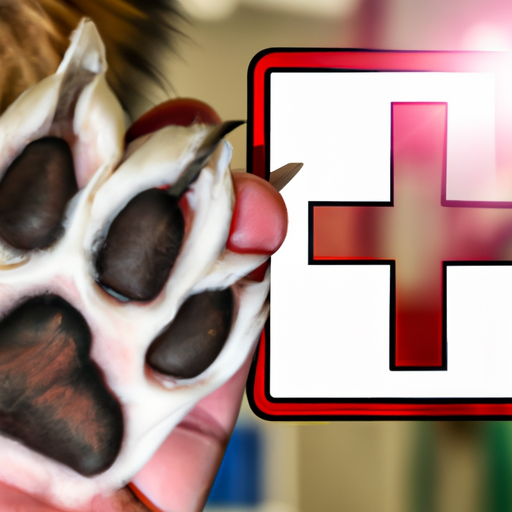As caregivers, we always want the best for our dogs. But, sometimes, despite our efforts, they can get hurt. One common injury is a dog paw burn. This guide will help you understand and take proper measures to prevent and treat this condition.
Recognizing Dog Paw Burns
You’ve probably noticed your dog limping, or maybe they’re avoiding walking on hot surfaces. They might even be licking their paws excessively. These are signs that your dog might have suffered a paw burn. Other signs to look out for include:
- Red, blistered, or darkened pads
- Visible wounds or cracks on the pads
- Unpleasant smell emanating from the paw
Causes of Dog Paw Burns
Dog paw burns are often the result of contact with hot surfaces. The most common culprits include:
- Hot pavement or asphalt
- Sand at the beach
- Metal surfaces, like manhole covers or car hoods
- Heating elements, like stove tops or fireplaces
Preventing Dog Paw Burns
Prevention is always better than cure. Here are some steps you can take to prevent dog paw burns:
- Avoid hot surfaces: If the pavement is too hot for your hand, it’s too hot for your dog’s paws.
- Walk early or late: The surfaces are cooler early in the morning or later in the evening.
- Use dog booties: These can provide a protective barrier against hot surfaces.
- Apply paw balm: This can help to protect and moisturize their pads.
Treating Dog Paw Burns
If your dog does get a burn, it’s essential to treat it promptly. Here’s a step-by-step guide:
- Cool the paw: Rinse the paw under cool (not cold) water or apply a cool compress.
- Clean the paw: Use a mild antiseptic to clean the burn.
- Apply a soothing balm: Use a pet-safe balm or cream to soothe the burn.
- Bandage the paw: Wrap the paw to protect it from further damage.
- Visit the vet: If the burn is severe, or if your dog is in pain, take them to the vet immediately.
What to Expect at the Vet
When you bring your dog to the vet, they will examine the burn and determine the severity. They might clean the wound, apply a bandage, or prescribe medication for pain and infection. In severe cases, your dog may need surgery or skin grafts.
Recovery and Aftercare
Proper aftercare is crucial to your dog’s recovery. You’ll need to:
- Keep the bandage clean and dry
- Prevent your dog from licking the wound
- Make sure they are resting adequately
- Follow your vet’s instructions for medication and follow-up visits
| Aftercare Tasks | Importance |
|---|---|
| Bandage care | Prevents infection |
| Rest | Speeds up healing |
| Medication | Manages pain and prevents infection |
FAQ Section
Q: Can dog paw burns be prevented?
Yes, by avoiding hot surfaces, using dog booties, and applying paw balm, you can prevent dog paw burns.
Q: What should I do if my dog has a paw burn?
Cool the paw, clean it, apply a soothing balm, bandage it, and take your dog to the vet if the burn is severe or if your dog is in pain.
Q: How long does it take for a paw burn to heal?
Healing time depends on the severity of the burn, but generally, minor burns might heal in 1-2 weeks, while severe burns may take several weeks or more.
Q: Can paw burns lead to long-term damage?
If left untreated, yes. But with prompt treatment and proper aftercare, most dogs recover fully from paw burns.
Dog paw burns can be painful and distressing for both you and your dog, but with awareness and care, they can be prevented and effectively treated. Always remember, when in doubt, consult your vet.



